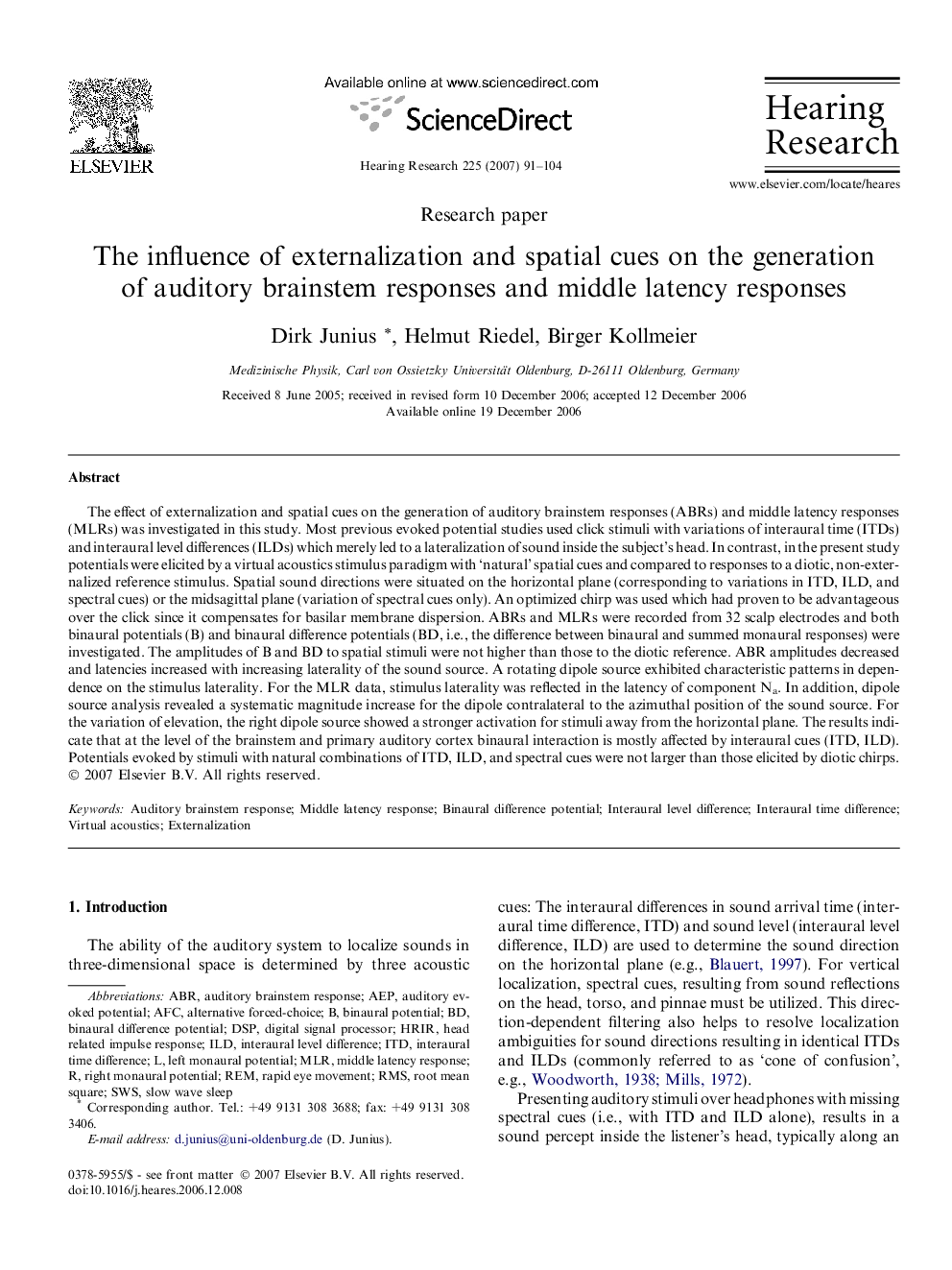| Article ID | Journal | Published Year | Pages | File Type |
|---|---|---|---|---|
| 4356249 | Hearing Research | 2007 | 14 Pages |
The effect of externalization and spatial cues on the generation of auditory brainstem responses (ABRs) and middle latency responses (MLRs) was investigated in this study. Most previous evoked potential studies used click stimuli with variations of interaural time (ITDs) and interaural level differences (ILDs) which merely led to a lateralization of sound inside the subject’s head. In contrast, in the present study potentials were elicited by a virtual acoustics stimulus paradigm with ‘natural’ spatial cues and compared to responses to a diotic, non-externalized reference stimulus. Spatial sound directions were situated on the horizontal plane (corresponding to variations in ITD, ILD, and spectral cues) or the midsagittal plane (variation of spectral cues only). An optimized chirp was used which had proven to be advantageous over the click since it compensates for basilar membrane dispersion. ABRs and MLRs were recorded from 32 scalp electrodes and both binaural potentials (B) and binaural difference potentials (BD, i.e., the difference between binaural and summed monaural responses) were investigated. The amplitudes of B and BD to spatial stimuli were not higher than those to the diotic reference. ABR amplitudes decreased and latencies increased with increasing laterality of the sound source. A rotating dipole source exhibited characteristic patterns in dependence on the stimulus laterality. For the MLR data, stimulus laterality was reflected in the latency of component Na. In addition, dipole source analysis revealed a systematic magnitude increase for the dipole contralateral to the azimuthal position of the sound source. For the variation of elevation, the right dipole source showed a stronger activation for stimuli away from the horizontal plane. The results indicate that at the level of the brainstem and primary auditory cortex binaural interaction is mostly affected by interaural cues (ITD, ILD). Potentials evoked by stimuli with natural combinations of ITD, ILD, and spectral cues were not larger than those elicited by diotic chirps.
